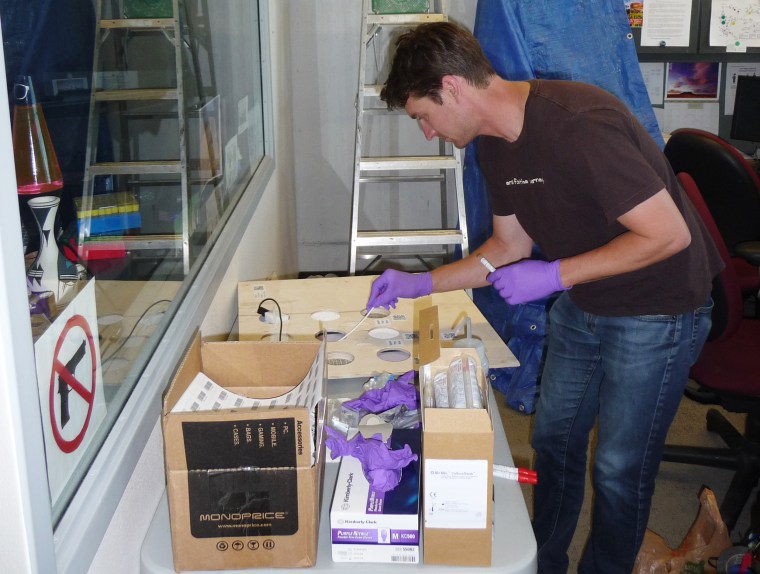Toronto has the CN Tower, San Diego its parks and waterfronts, Flagstaff its pine-covered mountains. Each city is distinguished by its landmarks, weather and people.
And, it seems, by their germs.
Researchers who were looking for the best way to measure germs in an office were surprised to find that it’s easier to tell apart samples of microbes based on what city they were taken from than any other factor.

That’s even though the offices were different from one another, the team reported in the American Society for Microbiology journal mSystems.
“This was especially interesting because even within each city, the offices we studied differed from each other in terms of size, usage patterns, and ventilation systems, suggesting that geography is more important than any of these features in driving the bacterial community composition of the offices within the ranges that we studied,” said Gregory Caporaso, of Northern Arizona University, Flagstaff, who helped lead the study.
“One of the main sources was the microbes that we shed from our skin and our mouth and our noses."
They also confirmed that when we work in an office, we’re sitting in a layer of germs from our colleagues’ skin. They also found, to their surprise, that this microbial cloud doesn’t change much from one season to the next.
What the team was trying to do, Caporaso said, was pretty mundane: they were testing the best materials to use for office-based germ tests.
They set out a variety of germ-gathering materials in various places in nine offices in Flagstaff, Toronto and San Diego. They told people in the offices not to touch them for a year.
“We just wanted to see what accumulated on a piece of drywall,” Caporaso said.
The kind of stuff that drifted around wasn’t surprising – mostly coming from the people working nearby. “One of the main sources was the microbes that we shed from our skin and our mouth and our noses,” Caporaso said.
“Across all nine offices, human skin bacterial communities were the largest identifiable source of the office bacterial community samples, with at least 25-30 percent of the office surface microbiome being derived from human skin,” the team wrote.
Related: How Pets Protect You From Allergies
Other studies have shown that people carry around their own particular cloud of microbes, and that places people touch collect their germ signatures, so the team tested the office workers, too.
To their surprise, they found no pattern showing that the workers were leaving their microbial marks on their offices. Instead, they found geography mattered.
“Offices within cities look more similar to each other than offices in different cities.”
“We can accurately predict which city an office microbiome sample is derived from,” they wrote.
“Offices within cities look more similar to each other than offices in different cities.”
It wasn’t so much that each city had a signature germ.
“One of the differences that we observe is in community richness – the number of types of different species,” Caporaso said.
“The offices in Flagstaff had much higher richness than the offices in San Diego or Toronto. There were many more types of species. We don’t know why that is.”
Related: Storm Clouds Are Filled With Bacteria
The good news is that these bacteria, fungi and bacteria-like microbes called archaea are mostly harmless.
Studies have shown that the bacteria living in and on people affect diseases from eczema to stomach ulcers, may affect weight gain and might help keep them healthy.
“Really, these are just normal organisms that in many cases are part of a healthy microbiome,” Caporaso said.
